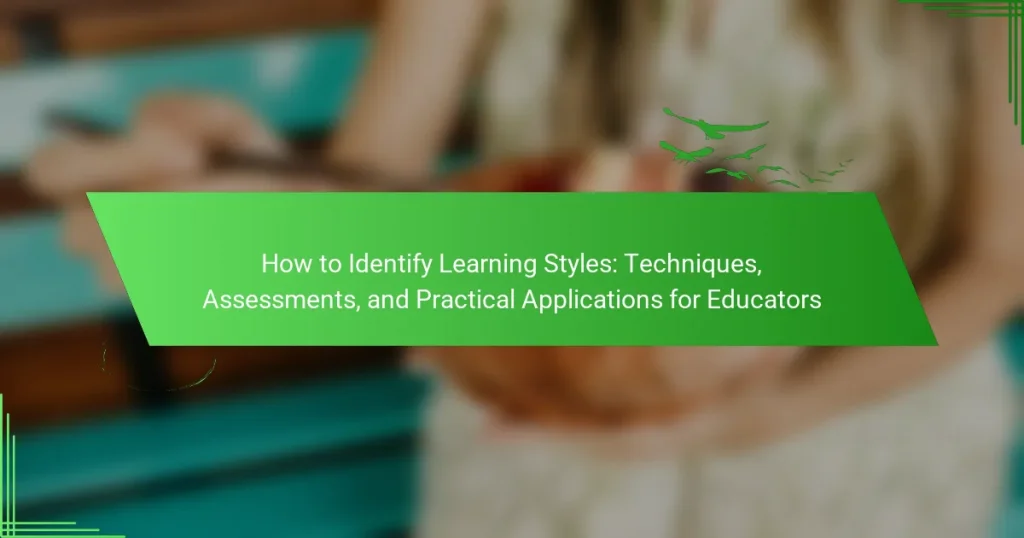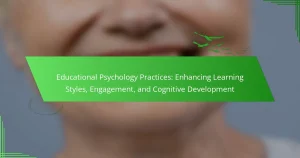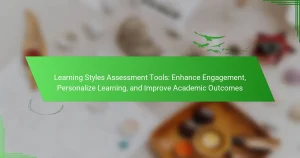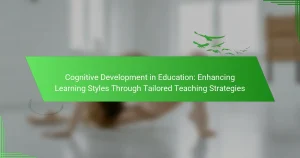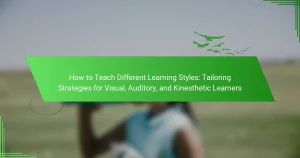Identifying learning styles is essential for effective teaching and enhancing student engagement. Educators can use techniques like observations, assessments, and surveys to understand diverse learning preferences. Key attributes include sensory preferences, cognitive processing, and motivation levels, which inform tailored instructional strategies. Practical applications in the classroom include adapting methods to individual styles and providing varied assignments to foster personalized learning experiences.
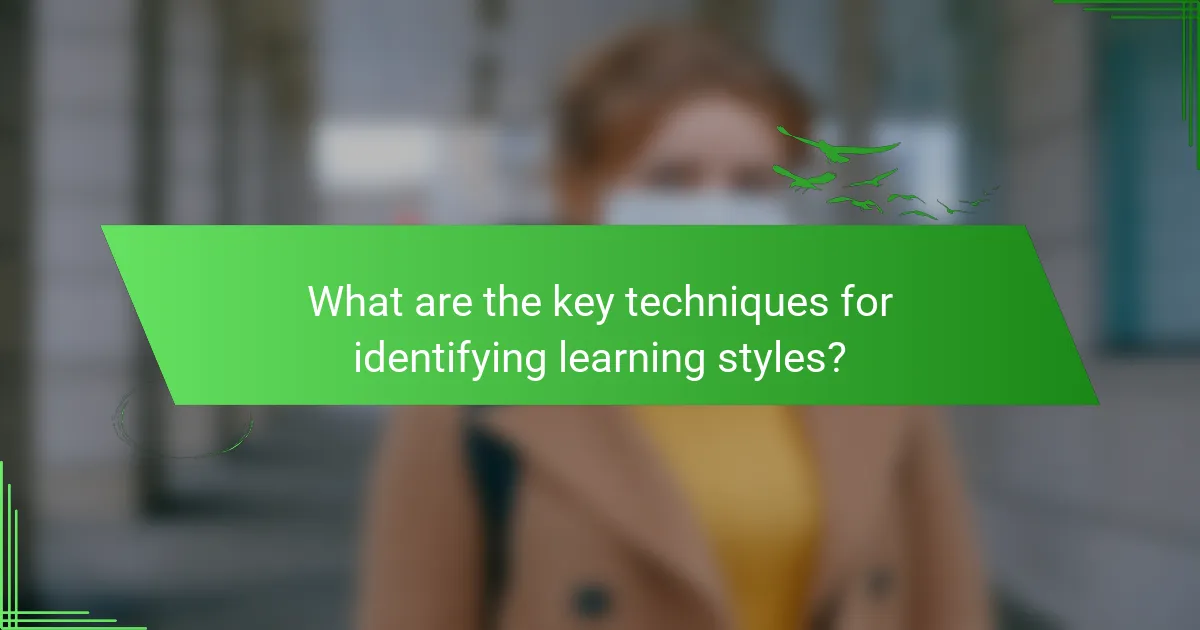
What are the key techniques for identifying learning styles?
To identify learning styles, educators can employ techniques such as observations, assessments, and surveys. Observations allow teachers to note student engagement and preferences during activities. Assessments, like the VARK questionnaire, categorize learners into visual, auditory, reading/writing, or kinesthetic styles. Surveys can gather self-reported data on learning preferences, providing insights into individual needs. Combining these techniques enhances understanding of diverse learning styles, enabling tailored instruction.
How do observational methods aid in learning style identification?
Observational methods effectively identify learning styles by providing insights into student behaviors and preferences. These methods allow educators to see how students engage with materials, interact with peers, and respond to different teaching approaches. By analyzing these observations, educators can tailor their strategies to accommodate various learning styles, enhancing overall educational effectiveness. This approach emphasizes the unique attribute of adaptability in teaching, ensuring that instruction meets diverse learner needs.
What role do interviews play in assessing learning preferences?
Interviews play a crucial role in assessing learning preferences by providing personalized insights into individual styles. They allow educators to gather qualitative data through open-ended questions, revealing how students perceive and engage with learning. This method highlights unique attributes of learning preferences, such as visual, auditory, or kinesthetic tendencies, which standardized assessments may overlook. Additionally, interviews foster a deeper connection between educators and students, enhancing the learning environment. As a result, tailored instructional strategies can be developed, improving educational outcomes.
Which standardized assessments are most effective?
Standardized assessments like the Learning Styles Inventory, VARK Questionnaire, and Gardner’s Multiple Intelligences Assessment are effective for identifying learning styles. These tools provide insights into student preferences, enhancing educational strategies. The Learning Styles Inventory focuses on visual, auditory, and kinesthetic modalities. The VARK Questionnaire evaluates preferences in four categories: visual, aural, read/write, and kinesthetic. Gardner’s assessment identifies strengths across multiple intelligences, offering a comprehensive view of learner capabilities. Each assessment contributes unique attributes, aiding educators in tailoring their teaching methods.
What are the characteristics of the VARK model?
The VARK model characterizes learning styles into four distinct types: Visual, Auditory, Reading/Writing, and Kinesthetic. Each type highlights preferred methods for processing information. Visual learners benefit from diagrams and charts, auditory learners excel with lectures and discussions, reading/writing learners thrive on text-based input, and kinesthetic learners prefer hands-on experiences. Understanding these characteristics aids educators in tailoring their teaching strategies to accommodate diverse learning preferences.
How does the Kolb Learning Style Inventory function?
The Kolb Learning Style Inventory functions by assessing an individual’s preferred learning style through a structured questionnaire. This inventory categorizes learners into four styles: converging, diverging, assimilating, and accommodating, based on their responses. Each style reflects unique approaches to processing information and problem-solving, which educators can leverage to tailor their teaching methods effectively. By understanding these styles, educators can enhance engagement and learning outcomes.
What informal techniques can educators use?
Informal techniques educators can use include observation, discussions, and flexible group activities. These methods help identify students’ learning styles by engaging them in a relaxed environment. For example, educators can observe how students interact during group work to discern their preferences for collaboration or independent tasks. Additionally, informal discussions can reveal students’ interests and strengths, guiding tailored instructional approaches. Using these techniques fosters a supportive learning atmosphere while enhancing the understanding of diverse learning styles.

What are the universal attributes of learning styles?
Learning styles are characterized by universal attributes such as sensory preferences, cognitive processing, and motivation levels. Understanding these attributes aids educators in tailoring their teaching methods. Sensory preferences include visual, auditory, and kinesthetic modalities. Cognitive processing involves how learners absorb and interpret information, while motivation levels reflect learners’ engagement and interest. These attributes help create effective learning environments.
How do learning styles influence student engagement?
Learning styles significantly enhance student engagement by tailoring educational approaches to individual preferences. Educators can utilize assessments like the VARK model to identify these styles, ensuring lessons resonate with diverse learners. This alignment fosters motivation, participation, and better retention of information, ultimately leading to improved academic performance. Engaging students through their preferred learning modalities promotes a more inclusive and effective educational environment.
What impact do learning styles have on academic performance?
Learning styles significantly influence academic performance by tailoring educational approaches to individual preferences. Research indicates that when educators align teaching methods with students’ learning styles, engagement and retention improve. For instance, visual learners benefit from diagrams, while auditory learners excel with lectures. A unique attribute of learning styles is their adaptability; educators can employ varied assessments to identify these styles, enhancing personalized learning experiences. Consequently, recognizing and applying learning styles can lead to better academic outcomes.
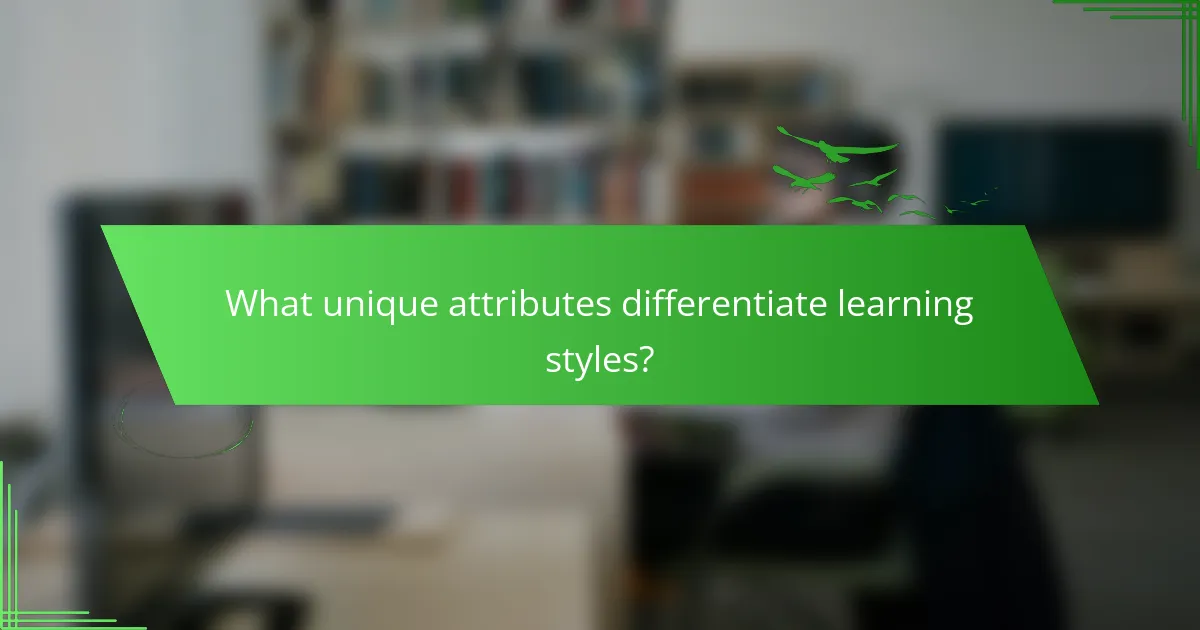
What unique attributes differentiate learning styles?
Learning styles are differentiated by unique attributes such as sensory preference, processing approach, and environmental factors. Sensory preference includes visual, auditory, and kinesthetic modalities. Processing approaches can be analytical or global. Environmental factors encompass light, sound, and space preferences. These attributes influence how individuals engage with and retain information, guiding educators in tailored instructional methods.
How does cultural background affect learning preferences?
Cultural background significantly influences learning preferences by shaping how individuals process information. Factors such as language, values, and social norms affect engagement and comprehension.
Cultural contexts determine whether learners prefer collaborative or independent study. For example, collectivist cultures may favor group work, while individualistic cultures may promote self-directed learning. Additionally, cultural attitudes towards authority can impact receptiveness to teaching styles.
Understanding these dynamics allows educators to tailor their approaches. By recognizing diverse learning preferences rooted in cultural backgrounds, educators can enhance engagement and effectiveness. This adaptability is crucial for fostering inclusive learning environments.
What are the implications of neurodiversity on learning styles?
Neurodiversity significantly influences learning styles by highlighting the need for tailored educational approaches. Diverse cognitive profiles, such as autism or dyslexia, require unique strategies to enhance learning. For example, visual aids may benefit visual learners, while hands-on activities support kinesthetic learners. Understanding these differences enables educators to create inclusive environments that accommodate various learning preferences. This approach not only fosters engagement but also improves educational outcomes for all students.

What are the rare attributes associated with learning styles?
Rare attributes associated with learning styles include emotional engagement, adaptability to diverse environments, and preference for collaborative learning. These attributes highlight unique ways individuals process information and interact with educational settings. Understanding these rare attributes can enhance teaching strategies and improve student outcomes.
How can educators identify less common learning styles?
Educators can identify less common learning styles through observation, assessments, and personalized feedback. Observing student engagement and preferences during activities can reveal unique styles. Utilizing learning style inventories provides structured insights, while one-on-one discussions allow educators to understand individual needs. Recognizing patterns in how students approach tasks can highlight less common styles, such as kinesthetic or intrapersonal learning.
What challenges arise when addressing unique learning needs?
Identifying unique learning needs presents challenges such as varying student backgrounds, diverse learning styles, and limited resources. Educators must adapt techniques and assessments to cater to individual differences. Furthermore, resistance to change in teaching methods can hinder effective implementation. Lastly, ongoing assessment is essential to ensure that unique needs are continuously met.
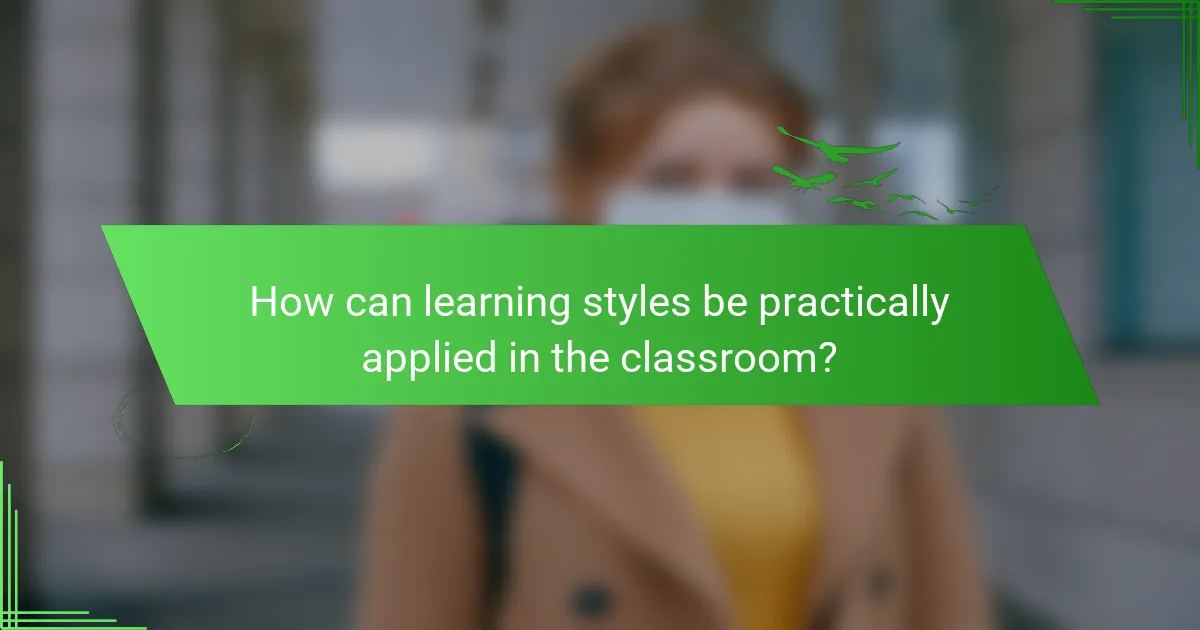
How can learning styles be practically applied in the classroom?
Learning styles can be practically applied in the classroom by tailoring teaching methods to individual preferences. Educators can use assessments to identify students’ learning styles, such as visual, auditory, or kinesthetic. Implementing diverse instructional strategies, like multimedia presentations, group discussions, and hands-on activities, enhances engagement. Additionally, providing choices in assignments allows students to leverage their strengths, fostering a more personalized learning experience. Regular feedback helps refine these approaches, ensuring they meet students’ evolving needs.
What strategies enhance learning experiences based on identified styles?
To enhance learning experiences based on identified styles, educators should employ tailored strategies. These strategies include differentiated instruction, which adapts teaching methods to various learning preferences. Additionally, incorporating technology, such as interactive tools, can engage visual and auditory learners effectively. Collaborative learning fosters social interaction, benefiting interpersonal learners. Regular assessments allow educators to adjust approaches based on student feedback, ensuring continuous improvement. Engaging students in self-reflection helps them understand their preferred styles, promoting autonomy in their learning journey.
How can differentiated instruction be implemented effectively?
Differentiated instruction can be effectively implemented by recognizing diverse learning styles and tailoring teaching methods accordingly. Educators can utilize various techniques, such as formative assessments, to identify students’ preferred learning modalities. Practical applications include grouping students by learning preferences and providing varied instructional materials. This approach fosters engagement and enhances understanding, ultimately improving educational outcomes.
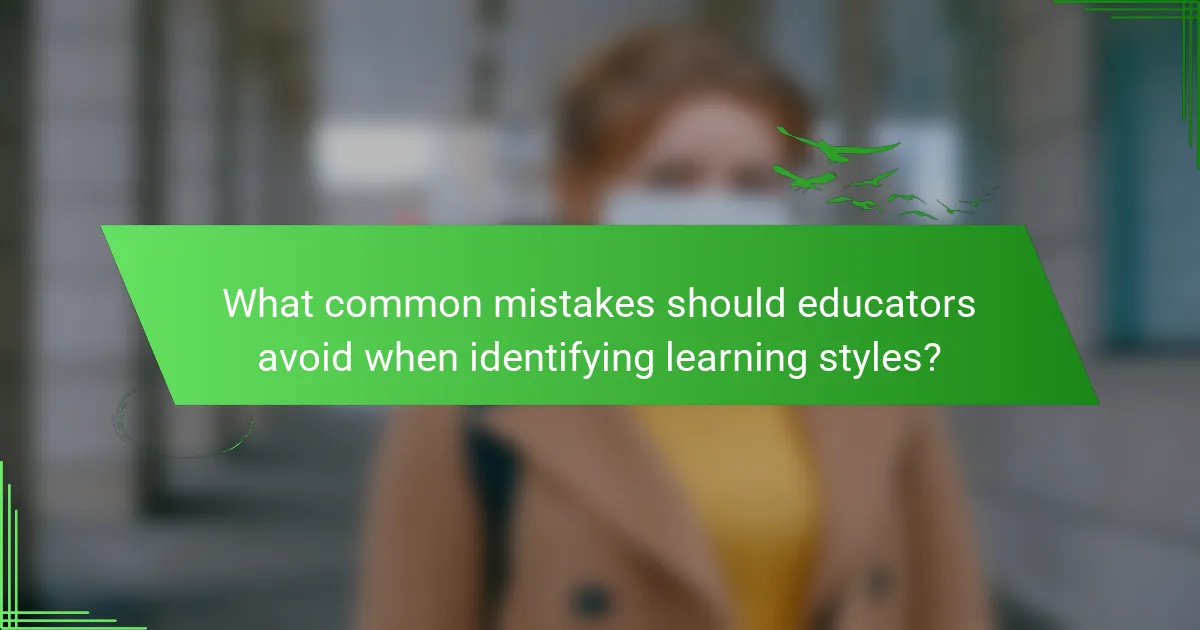
What common mistakes should educators avoid when identifying learning styles?
Educators should avoid overgeneralizing learning styles, relying solely on assessments, and neglecting individual differences. Misunderstanding the flexibility of learning styles can hinder effective teaching. Additionally, failing to integrate varied instructional strategies limits engagement. A balanced approach that respects both styles and adaptability is crucial for fostering diverse learning environments.
How can educators ensure they are not stereotyping students?
Educators can avoid stereotyping students by recognizing individual learning styles and adapting their teaching methods accordingly. Utilize diverse assessments to identify unique attributes of each student, such as preferences for visual, auditory, or kinesthetic learning. Implementing varied teaching techniques fosters an inclusive environment that respects differences. Regular reflection on teaching practices and soliciting feedback from students can further enhance awareness and minimize biases.
What best practices should be adopted for continuous assessment?
To adopt best practices for continuous assessment, educators should implement regular feedback, utilize varied assessment methods, and align assessments with learning objectives. Regular feedback fosters student engagement and improvement. Varied assessment methods, such as formative and summative assessments, cater to different learning styles. Aligning assessments with learning objectives ensures relevance and clarity in measuring student progress.
What expert insights can guide effective learning style identification?
Expert insights for effective learning style identification include personalized assessments, observation of student engagement, and adapting teaching methods. Utilizing tools like learning style inventories can reveal preferences. Observing how students respond to different instructional approaches helps refine techniques. Additionally, fostering a growth mindset encourages exploration of diverse learning modalities, enhancing overall educational outcomes.
